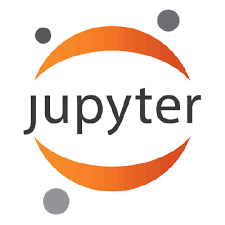There has been a large focus in recent years on making assets in scientific research findable, accessible, interoperable and reusable, collectively known as the FAIR principles. A particular area of focus lies in applying these principles to scientific computational workflows. Jupyter notebooks are a very popular medium by which to program and communicate computational scientific analyses. However, they present unique challenges when it comes to reuse of only particular steps of an analysis without disrupting the usual flow and benefits of the notebook approach, making it difficult to fully comply with the FAIR principles. Here we present an approach and toolset for adding the power of semantic technologies to Python-encoded scientific workflows in a simple, automated and minimally intrusive manner. The semantic descriptions are published as a series of nanopublications that can be searched and used in other notebooks by means of a Jupyter Lab plugin. We describe the implementation of the proposed approach and toolset, and provide the results of a user study with 15 participants, designed around image processing workflows, to evaluate the usability of the system and its perceived effect on FAIRness. Our results show that our approach is feasible and perceived as user-friendly. Our system received an overall score of 78.75 on the System Usability Scale, which is above the average score reported in the literature.
翻译:近年来,人们一直高度注重使科学研究中的资产能够找到、可获取、可互操作和可重复使用,统称为FAIR原则。一个特别的重点领域是将这些原则应用于科学计算工作流程。Jupyter笔记本是一个非常受欢迎的媒介,用来编程和交流计算科学分析。然而,当只重复特定的分析步骤而不干扰笔记本方法的通常流程和好处时,它们就提出了独特的挑战,使笔记本方法难以完全遵循FAIR原则。我们在这里提出了一个办法和工具,用简单、自动化和最低限度侵入的方式将语义技术的力量添加到Python编码的科学工作流程中。语义描述作为一系列纳米出版物出版,可以通过Jupyter实验室插件搜索和使用其他笔记本。我们描述了拟议方法和工具的实施情况,并提供了15名参与者的用户研究结果,这些研究是围绕图像处理工作流程设计的,以评价该系统的可用性及其对FAVIR的可感知效果。我们的成果显示,我们的平均用户分级系统是可行的,我们的平均分级系统是公认的。





